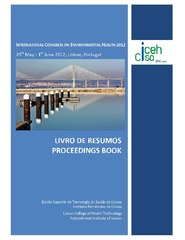Приказ основних података о документу
Influence of a strong static magnetic field of 2.1 T on wing size and shape of Drosophila melanogaster
| dc.contributor | Albuquerque, Paula | |
| dc.contributor | Cabo Verde, Sandra | |
| dc.contributor | Manteigas, Vitor | |
| dc.contributor | Monteiro, Ana | |
| dc.contributor | Ramos, Carla | |
| dc.contributor | Silva, Andreia | |
| dc.contributor | Viegas, Carla | |
| dc.contributor | Viegas, Susana | |
| dc.creator | Savić, Tatjana | |
| dc.creator | Ristić-Đurović, Jasna | |
| dc.creator | Dimitrijević, Danica | |
| dc.creator | Todorović, Dajana | |
| dc.date.accessioned | 2020-11-20T09:55:28Z | |
| dc.date.available | 2020-11-20T09:55:28Z | |
| dc.date.issued | 2012 | |
| dc.identifier.isbn | 978-989-8077-22-6 | |
| dc.identifier.uri | https://radar.ibiss.bg.ac.rs/handle/123456789/4003 | |
| dc.description.abstract | Different environmental factors have an effect on development, behaviour, physiology and therefore on adaptation of many organisms. Magnetic field is one of the omnipresent stressful abiotic factors, which in complex interactions of other environmental factors has particular importance and could affect different biological systems during their development. Fly wings are an excellent system for studying morphological variation because of their structural simplicity and many well-defined landmarks suitable for morphometrics. A potential adaptive nature and quantitative variability in different populations made wings size and shape very useful characteristic for consideration of environmental stress effects. The effect of a strong static magnetic field on wing size and shape of Drosophila melanogaster was studied. The first instar larvae of laboratory strain were placed separatelyto the North (N), namely South (S) magnetic pole and exposed to the magnetic induction of 2.1 T (VINCY Cyclotron magnet) for 2h. Size and shape of the wings were characterized by a set of 15 landmarks and analyzed with the method of geometric morphometrics. To quantify wing size, it was used centroid size, which is measure of the spread of landmarks around their centre of gravity. Observed results indicate the existence of the Drosophila wing size and shape sexual dimorphism. Apparent biological effects on the N and S magnetic poles were not observed on wing size and shape compare to the control group. Results indicated that 2.1 T static magnetic field couldn’t be considered as a potential stressor, influencing on wing size and shape during the embryonic and post-embryonic development of indivuduals. | en |
| dc.language.iso | en | sr |
| dc.publisher | Lisbon: Scientific Area of Environmental Health - Lisbon College of Health Technology | sr |
| dc.relation | info:eu-repo/grantAgreement/MESTD/Basic Research (BR or ON)/173012/RS// | sr |
| dc.relation | info:eu-repo/grantAgreement/MESTD/Basic Research (BR or ON)/173027/RS// | sr |
| dc.rights | openAccess | sr |
| dc.source | International Congress on Environmental Health 2012 | sr |
| dc.title | Influence of a strong static magnetic field of 2.1 T on wing size and shape of Drosophila melanogaster | en |
| dc.type | conferenceObject | sr |
| dc.rights.license | ARR | sr |
| dcterms.abstract | Савић, Татјана; Тодоровић, Дајана; Димитријевић, Даница; Ристић-Ђуровић, Јасна; | |
| dc.rights.holder | © 2012 by Scientific Area of Environmental Health - ESTeSL | sr |
| dc.description.other | Albuquerque P, Cabo Verde S, Manteigas V, Monteiro A, Ramos C, Silva A, Viegas C, Viegas S, editors. International Congress on Environmental Health 2012: Proceedings Book; 2012 May 29 - Jun 1; Lisbon, Portugal. Lisbon: Scientific Area of Environmental Health - Lisbon College of Health Technology; 2012. p. 314. | en |
| dc.citation.spage | 314 | |
| dc.type.version | publishedVersion | sr |
| dc.identifier.fulltext | https://radar.ibiss.bg.ac.rs/bitstream/id/7746/ICEH_2012-314.pdf | |
| dc.identifier.rcub | https://hdl.handle.net/21.15107/rcub_ibiss_4003 |

